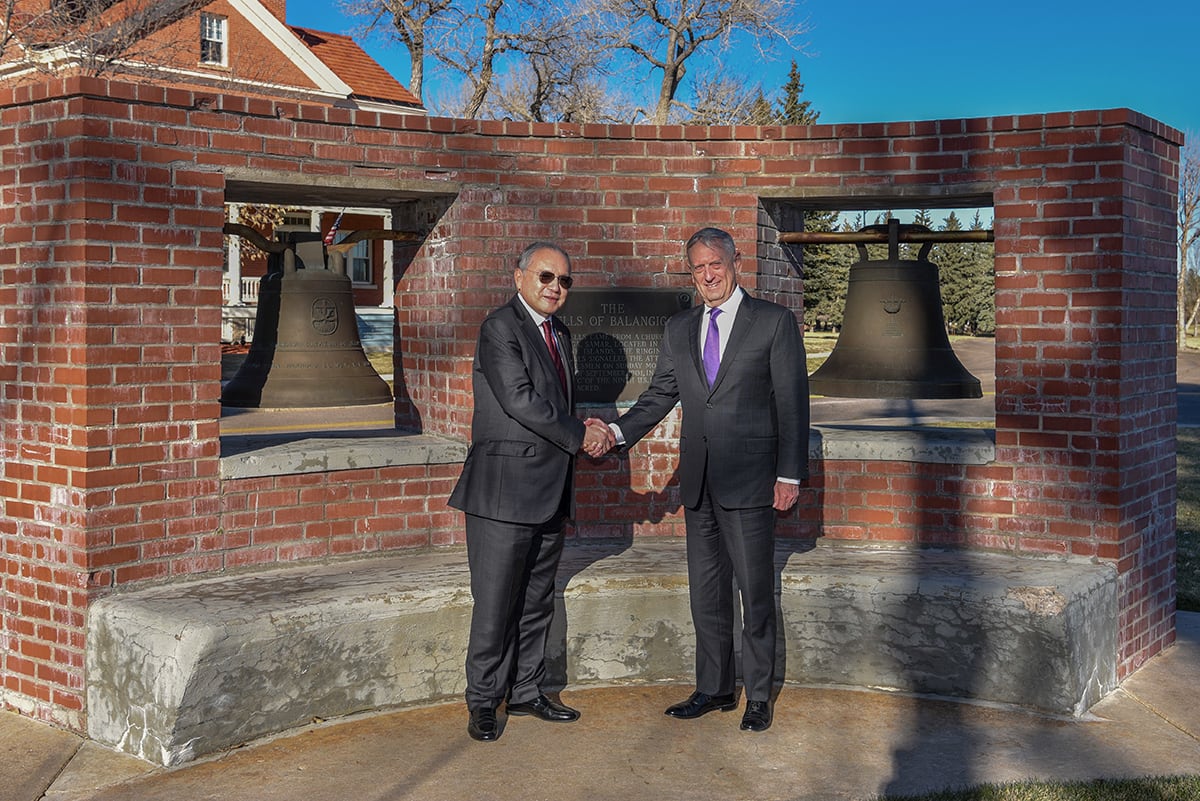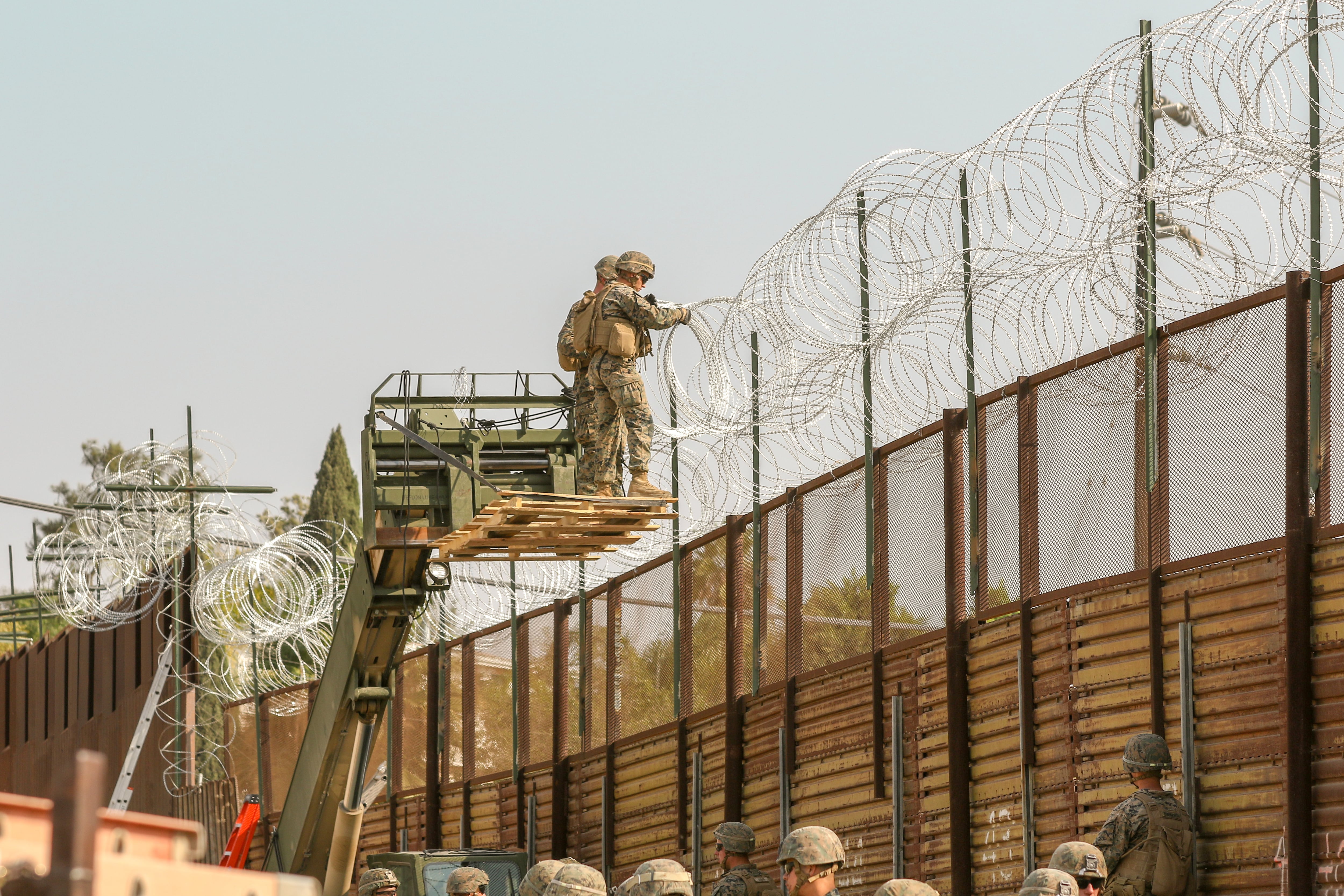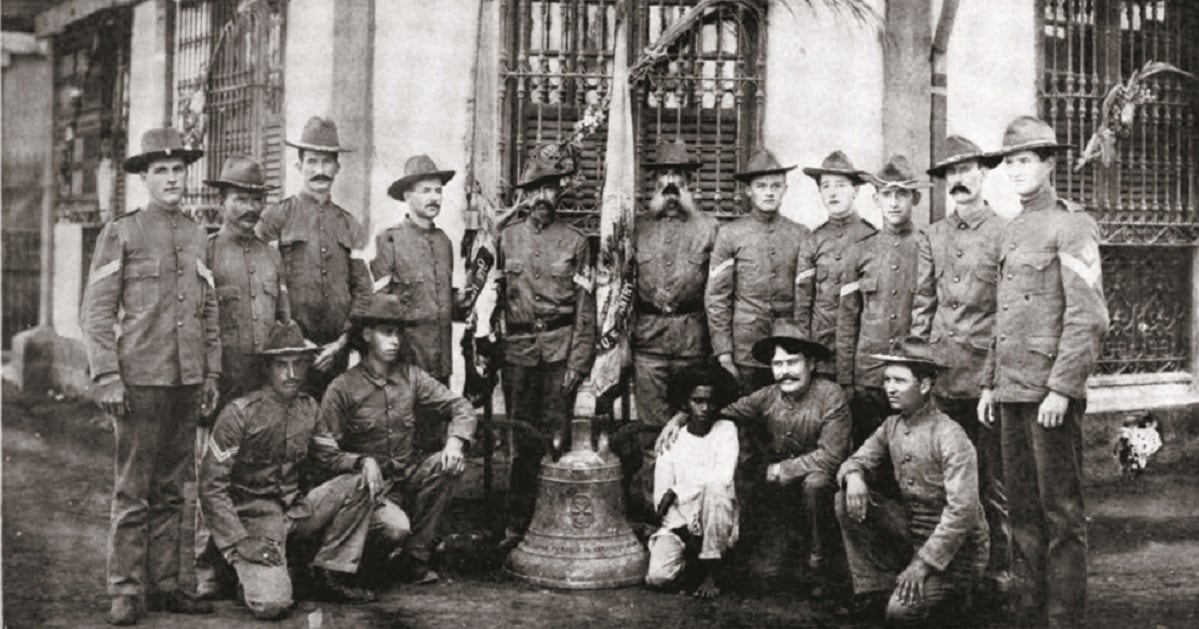After Defense Secretary Jim Mattis visited troops on the Mexican border Wednesday, he took a side trip to F.E. Warren Air Force Base in Wyoming for a ceremony to mark the beginning of the process to return the Bells of Balangiga to the Philippines.
So just what are these bells, and why are they so important to the Philippines, which has been trying to get them back for more than two decades?
The short answer is that the three church bells are war trophies.
U.S. Army soldiers took them from a church on the central Philippine island of Samar during the Philippine-American War, fought from 1899 to 1902. The soldiers brought two of the bells back to what was then Fort David Allen Russell, home of the 11th Infantry Regiment.
Fort D.A. Russell later became F.E. Warren Air Force Base, and the bells have been on display for years at Trophy Park. The third bell is in South Korea at the the home of the 9th Infantry Regiment, Camp Red Cloud.

After its defeat in the Spanish-American War of 1898, Spain ceded the Philippines, its longstanding colony, to the United States in the Treaty of Paris. The Filipinos, not surprisingly, had other ideas. Having supported the Americans in the battle against their colonial overlords, Filipino nationalists, led by Emilio Aguinaldo, wanted independence rather than a change in colonial rulers.
Following the American naval victory over Spain in the Battle of Manila Bay, American forces had seized the capital city, which put them in direct conflict with Filipino independence fighters, who had already liberated most of the country and had declared an independent republic. On Feb. 4, 1899, just two days before the U.S. Senate ratified the treaty, fighting broke out.
In the protracted and bloody war that ensued, the United States explicitly fought to force Filipinos into an American empire, killing a quarter million people in the process, chiefly civilians who succumbed to starvation or disease, including thousands forced into concentration camps. The unabashedly imperialistic war caused deep divisions within the United States, with opponents arguing that the creation of overseas colonies was at odds with the republican ideals of the American Revolution. Supporters pointed to the Filipinos' racial inferiority as evidence they were unprepared to govern themselves, as well as the islands' importance to U.S. economic interests in the Pacific.
The bells were seized during the most contentious incident of the war.
RELATED

On the morning of Sept. 28, 1901, while they were eating breakfast, 74 soldiers from the 9th Infantry were ambushed in the Samar port of Balangiga. The insurrectionists had infiltrated the town disguised as laborers or as women mourners carrying coffins ostensibly bearing cholera victims, but actually packed with machetes. The attack began on the prearranged signal of the local police chief: the ringing of the three bells in the church tower.
Forty-five soldiers were killed and 11 wounded, the worst single-day losses for the Army since Custer’s Last Stand, a quarter of a century earlier.
The American response was brutal. Brig. Gen. Jacob H. Smith ordered his men to kill every male over the age of 10 on the island, which had a population of 250,000.

“I want no prisoners,” Smith, who was later court-martialed for his actions, instructed a subordinate. “I wish you to kill and burn, the more you kill and burn the better it will please me.”
Exactly how successfully these orders were carried out is unclear: Estimates of the number of islanders killed by American reprisals range from 1,000 to 50,000, with most scholars endorsing the smaller end of the range. Smith’s men also burned Balangiga to the ground and carried off the bells that had signaled the attack.
In the century that followed, the Balangiga bells took on symbolic importance for both sides. For the 9th Infantry, they were important war trophies that memorialized the dead and paid homage to the unit’s participation in a bloody jungle counterinsurgency.
For Filipinos, however, they have become a resonant symbol of their long independence struggle. Since the mid-1990s, Philippine presidents, senators, and Catholic bishops have been pressuring the United States to return them — to no avail.
“We are not involved in the business of dismantling memorials to our comrades that have fought in other wars,” Joe Sestak, the commander of the American Legion in Wyoming, told the New York Times when the issue first came to the fore in 1997.
But most veterans gradually came around to the Filipinos' way of thinking, given the imperialistic nature of that war so long ago.
In August, the American Legion passed a resolution at its national conference in favor of returning the bells.
For more on war trophies see “The War Over Plunder, Who Owns Art Stolen in War,” by Colin Woodward at historynet.com.









